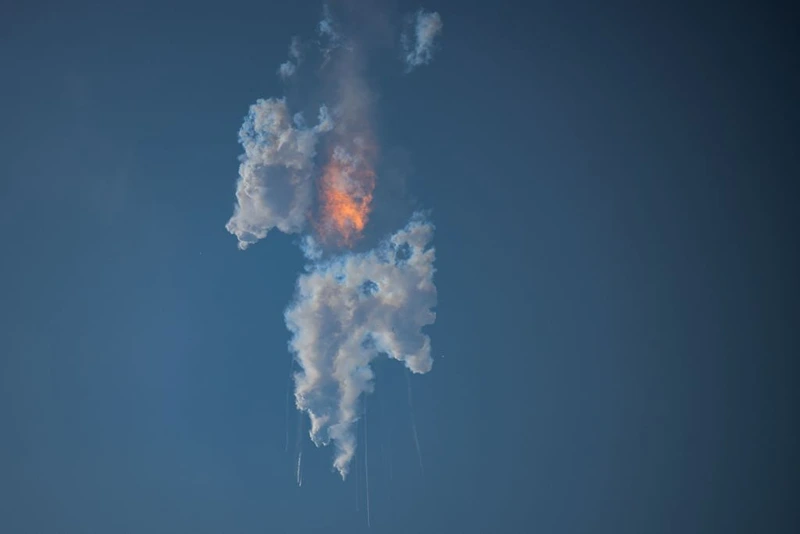

OAN Roy Francis
UPDATED 9:44 AM – Thursday, April 20, 2023
SpaceX successfully launched the biggest and most powerful rocket that has ever been built from south Texas on Thursday.
Minutes after the launch, while awaiting stage separation, the rocket experienced a failure. The SpaceX host described the failure as a “rapid unscheduled disassembly” during the livestream.
The rocket began to fall and then exploded four minutes later, ultimately landing in the Gulf of Mexico.
The cause of the failure was not clear, however, SpaceX CEO Elon Musk took to Twitter to congratulate his team and saying that they had learned a lot from the launch.
“Congrats @SpaceX team on an exciting test launch of Starship! Learned a lot for next test launch in a few months,” Musk said.
Bill Nelson, an administrator at the National Aeronautics and Space Administration (NASA), also congratulated SpaceX on the launch, saying he is excited for the future.
SpaceX later said that its teams would also continue to review the data from the launch and work towards the next flight test.
“With a test like this, success comes from what we learn, and today’s test will help us improve Starship’s reliability as SpaceX seeks to make life multi-planetary,” the company said.
If the flight had gone as planned, the first stage booster would have drop into the Gulf of Mexico, while the spacecraft would have flown for around an hour and a half over the Atlantic Ocean, before coming down near Hawaii.
The plan for the new rocket, when successfully tested and launched, is to send people and cargo to the moon and to Mars. The flight on Thursday was not carrying any personnel or satellites.
Musk had previously estimated that there is an 80% chance that one of the fleets of Starships that are under construction will be ready to go into orbit, and potentially be in orbit, by the end of 2023. However, he did clarify that full and rapid reusability will take longer to achieve.
The Federal Aviation Administration had awarded SpaceX a launch license on Friday, which is valid for five years. The decision was met with backlash and criticism from the American Bird Conservancy which said that the company’s operations are damaging “important coastal bird habitats.”
“Space X operations continue to damage important coastal bird habitats at Boca Chica in south Texas,” Mike Parr, the president of the American Bird Conservancy, said. “We believe that Cape Canaveral offers a much lower environmental impact option, and is underutilized with less than one launch per month currently despite having six active launch pads and more pads that could be made available.”
The next launch by SpaceX is expected to take place on April 26, 2023. The SpaceX Falcon Heavy Rocket is expected to launch the ViaSat-3 Americas satellite from the Kennedy Space Center.
Stay informed! Receive breaking news blasts directly to your inbox for free. Subscribe here. https://www.oann.com/alerts






Be the first to comment